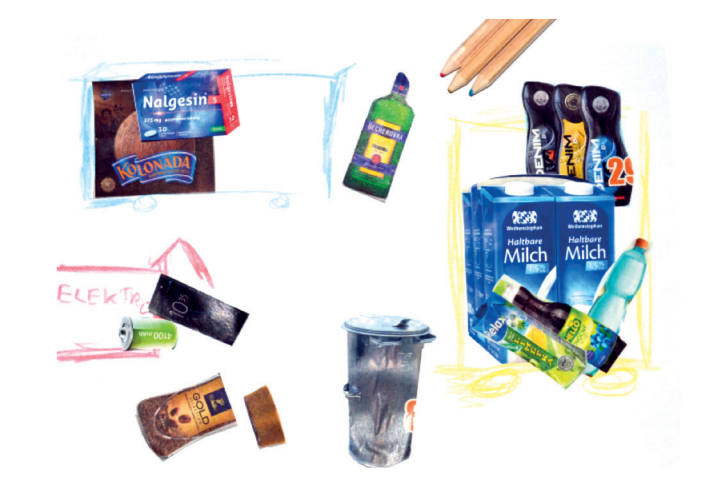



Task 2: A Sorting Quiz
The task is intended to verify pupils’ knowledge of the basic waste sorting. We assume that pupils know how to sort waste into plastic, paper, glass, bio-waste, electronic, mixed waste or other categories as needed.
Equipment: coloured pencils or markers, paper glue, scissors, A3 paper, advertising leaflets.
The task can be done in pairs or in groups. Each party then cuts out a certain number of images – from an advertising leaflet, which are then passed to the other party or a classmate. The task is to create (draw) collection containers and to glue the cut-out pictures into them.
In the case of group work, we can present the collages and by doing so we can check their correctness and discuss the classification of waste (images).
Note: A problem can occur with food packaging consisting of two parts – glass + plastic, or if the paper wrapping has a plastic part inside. The suitable option is – we decide according to what is visible and assume the box to be empty. In the case of two visible parts, it is possible to cut things apart. In the photo there is a demonstration of an unfinished collage. Some parts are not sorted; also there is an instant coffee container (plastic and glass). The collage should still be completed.

Pic 130: Sorting of the waste – an example